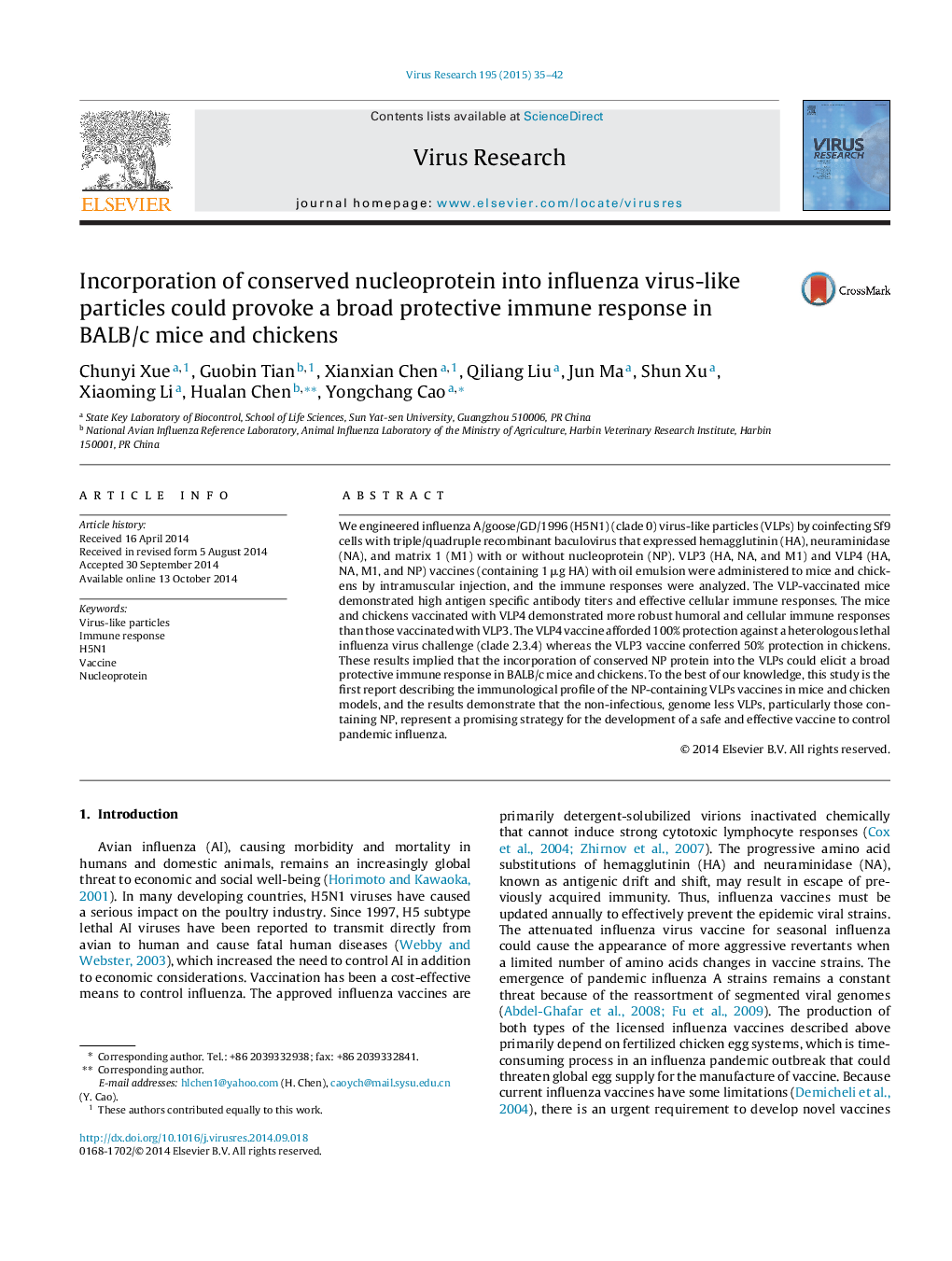| Article ID | Journal | Published Year | Pages | File Type |
|---|---|---|---|---|
| 3428343 | Virus Research | 2015 | 8 Pages |
•We develop virus-like particles (VLPs) vaccine candidate for influenza protection.•The VLPs are composed of hemagglutinin, neuraminidase, matrix 1 and nucleoprotein.•Incorporation of nucleoprotein into VLPs could elicit a broad protective immune response.
We engineered influenza A/goose/GD/1996 (H5N1) (clade 0) virus-like particles (VLPs) by coinfecting Sf9 cells with triple/quadruple recombinant baculovirus that expressed hemagglutinin (HA), neuraminidase (NA), and matrix 1 (M1) with or without nucleoprotein (NP). VLP3 (HA, NA, and M1) and VLP4 (HA, NA, M1, and NP) vaccines (containing 1 μg HA) with oil emulsion were administered to mice and chickens by intramuscular injection, and the immune responses were analyzed. The VLP-vaccinated mice demonstrated high antigen specific antibody titers and effective cellular immune responses. The mice and chickens vaccinated with VLP4 demonstrated more robust humoral and cellular immune responses than those vaccinated with VLP3. The VLP4 vaccine afforded 100% protection against a heterologous lethal influenza virus challenge (clade 2.3.4) whereas the VLP3 vaccine conferred 50% protection in chickens. These results implied that the incorporation of conserved NP protein into the VLPs could elicit a broad protective immune response in BALB/c mice and chickens. To the best of our knowledge, this study is the first report describing the immunological profile of the NP-containing VLPs vaccines in mice and chicken models, and the results demonstrate that the non-infectious, genome less VLPs, particularly those containing NP, represent a promising strategy for the development of a safe and effective vaccine to control pandemic influenza.
